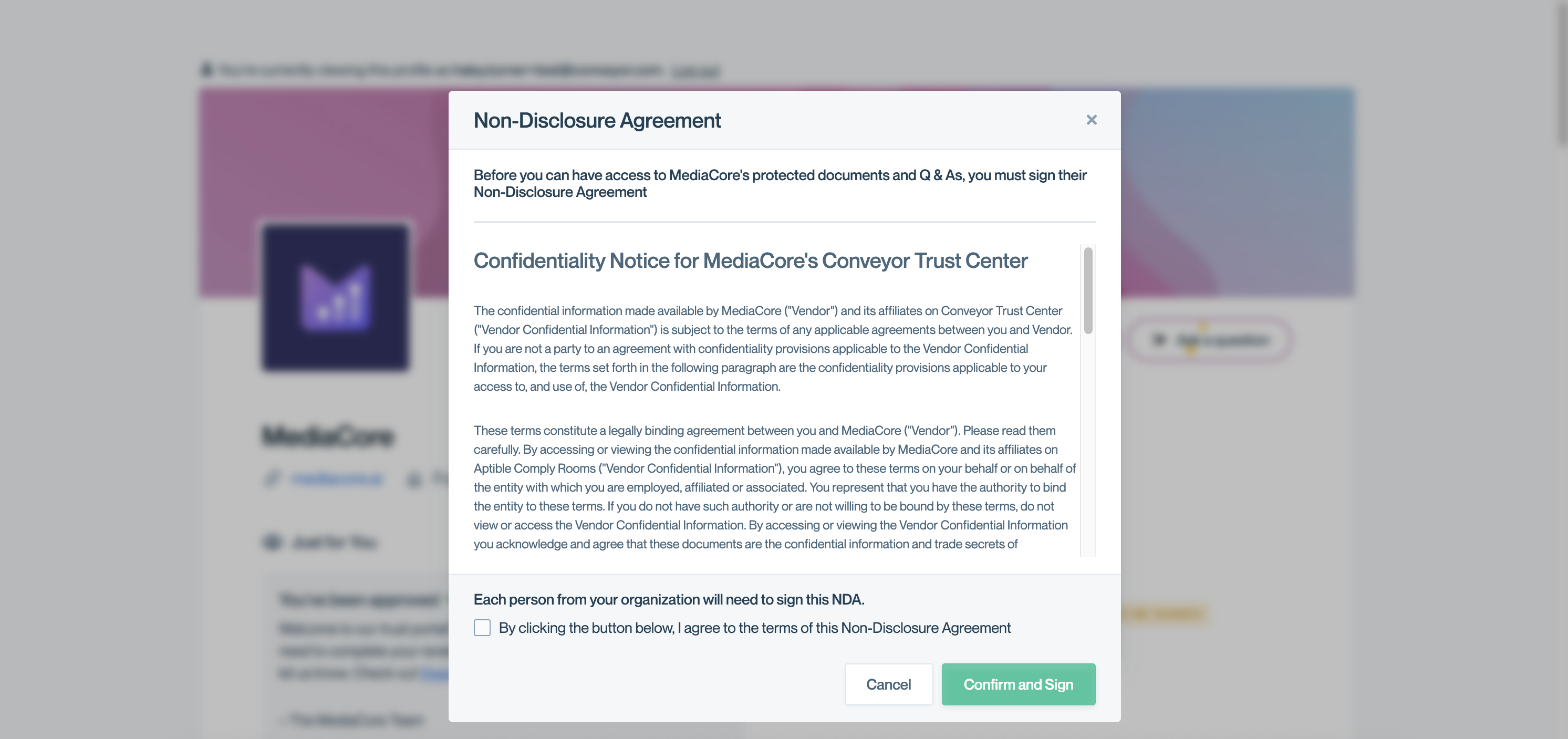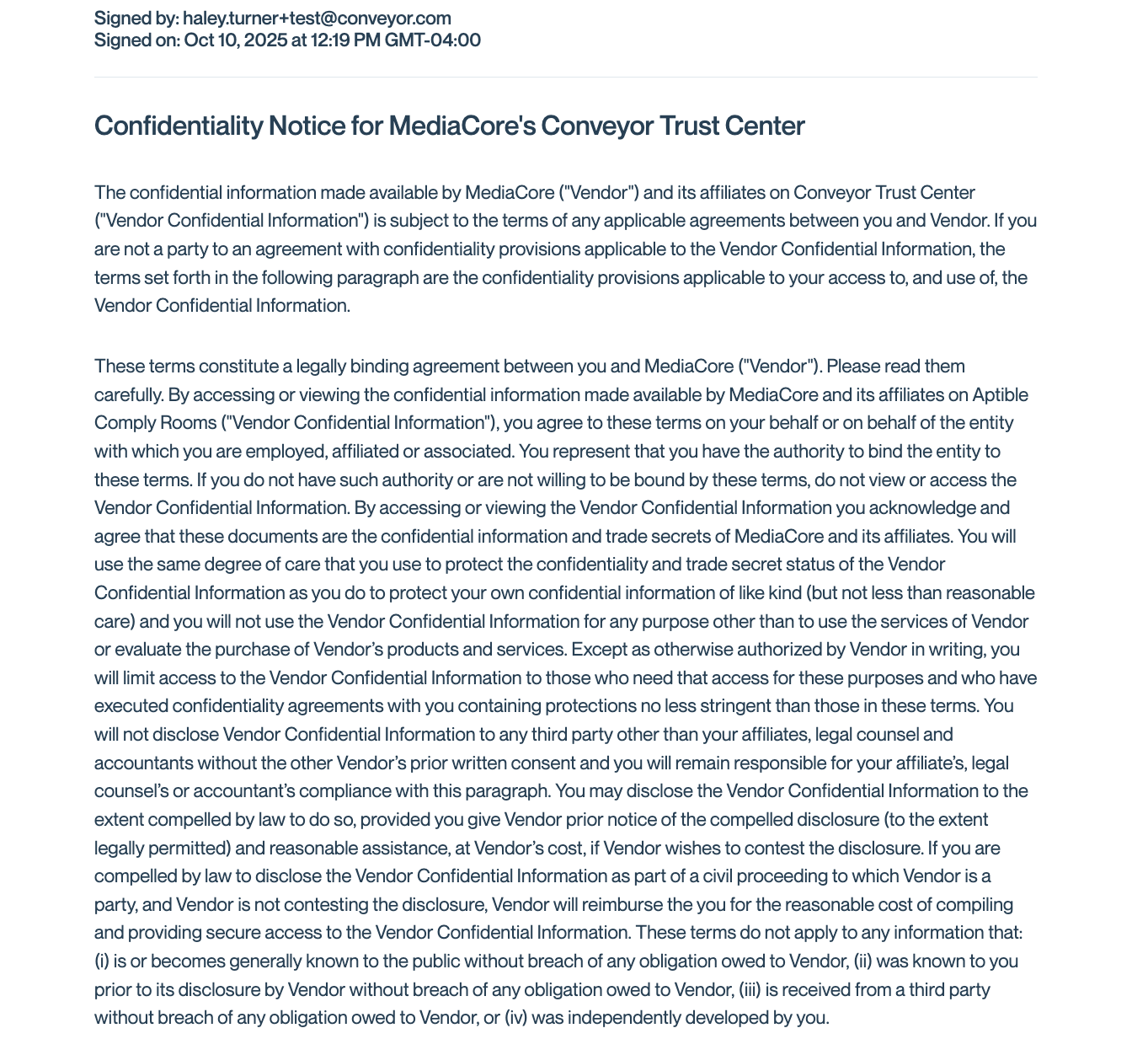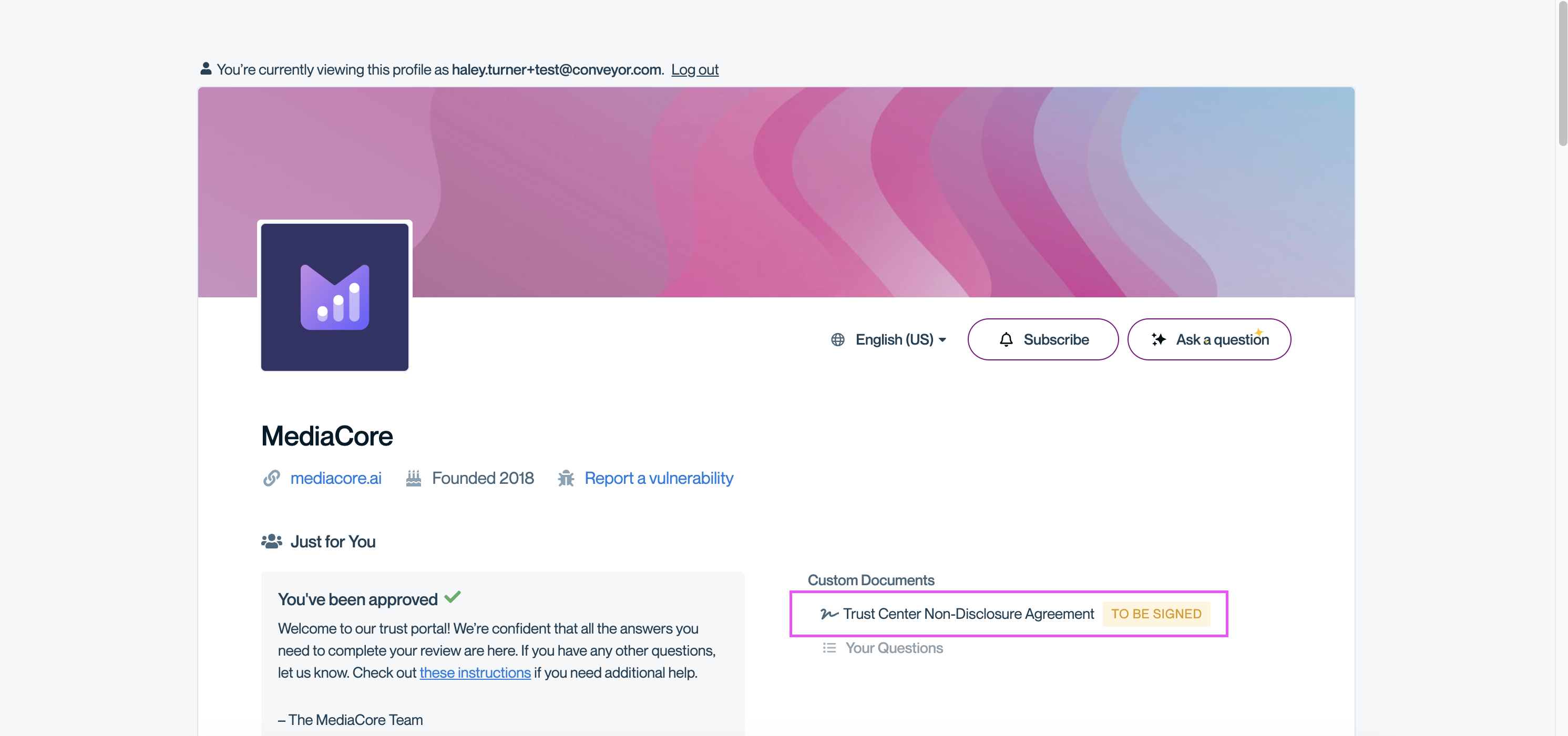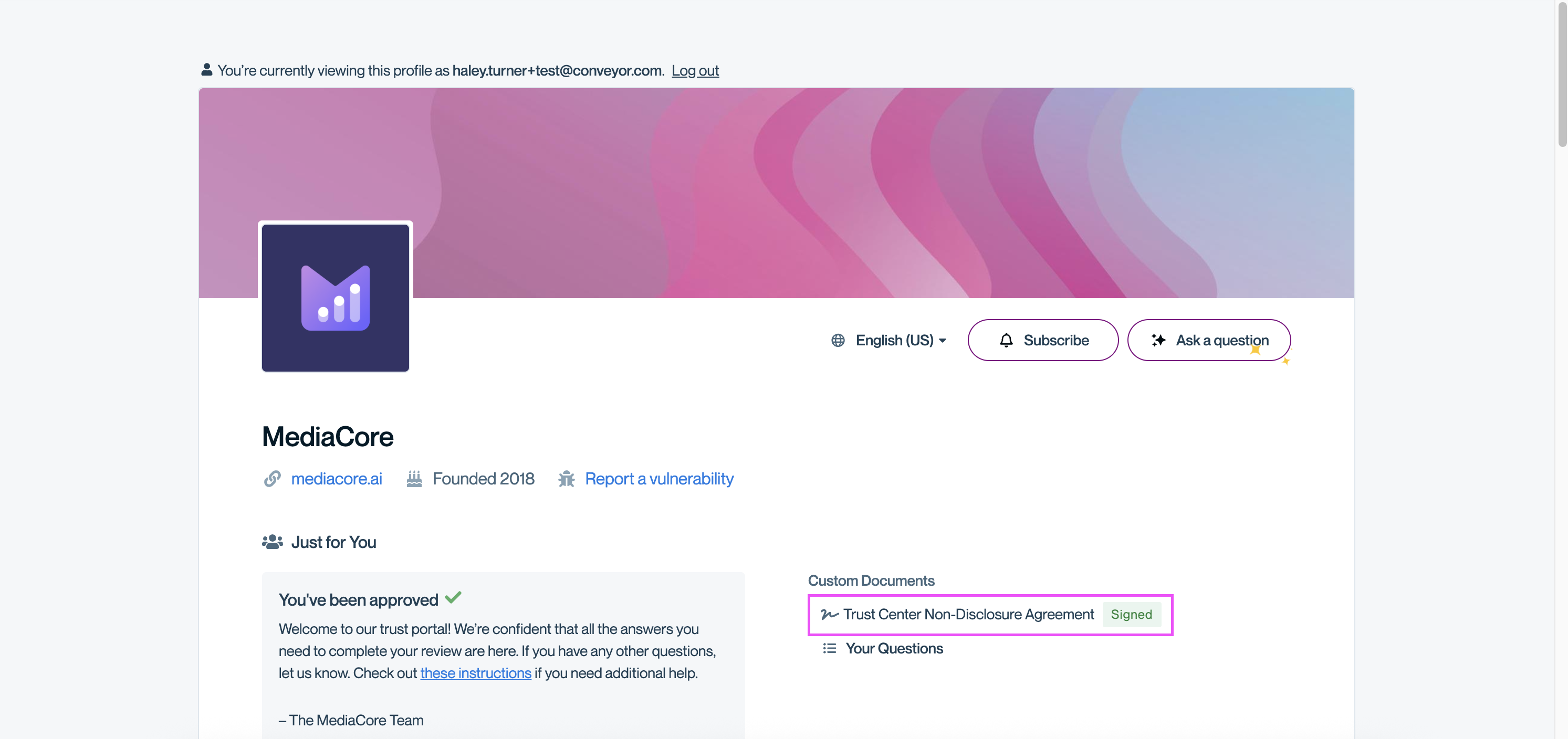Clickwrap legal compliance
Conveyor’s clickwrap NDA flow is designed to meet all core legal requirements under the U.S. ESIGN Act and the Uniform Electronic Transactions Act (UETA).
Specifically, both laws require four key elements for enforceability:
- Clear intent to sign
- Consent to do business electronically
- Association of the signature with the record
- Retention of auditable records
Below is how Conveyor’s implementation addresses each requirement:
1. Intent to sign
Users must show a clear intent to sign. In Conveyor’s flow, they cannot access gated content without checking the acceptance box and clicking Confirm and Sign.

Users must indicate their assent twice, reinforcing intent.
2. Consent to do business electronically
Conveyor’s clickwrap flow implies consent by requiring users to interact with the checkbox and button to proceed. In B2B contexts, this is legally sufficient. If you want explicit consent language, you can edit your NDA text to include it.
3. Association of signature with the record
Conveyor maintains a verifiable record linking the signature event to the signed document, including signer identity, timestamp, and version.
You can view these records in the Connections tab or through your DocuSign integration (if applicable).

Click "View Signed NDA" to see a signer's record.

Each record includes signer details, date, and the signed document.
4. Record retention
Signers must have access to the final document. Conveyor provides permanent access through the Trust Center, where users can view their NDA status and records at any time.

The NDA status indicator shows whether a user has signed.
When the NDA is signed, the status updates, and users can view the same document and signature record:

NDA status updates once the user signs.
Updated about 1 month ago
